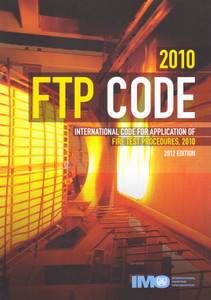
This publication provides general design guidance and promotes uniformity of type, location and priority for alerts and indicators required by the SOLAS and MARPOL Conventions. The Code will benefit designers and operators by consolidating references to priorities, aggregation, grouping, locations and types of shipboard alerts and indicators.
This Code updates, revises and replaces the Code on Alarms and Indicators, 1995. It includes definitions of key alarm terminology and guides readers on the use of light and audible presentations of alerts. The functions, IMO instruments and assessments of various alarm types are given in table format, making the book a useful reference document.
Taking
into
account
changing
technology
and
the
continuing
evolution
of
IMO
instruments,
the
Code
on
Alerts
and
Indicators,
2009,
was
developed
in
accordance
with
a
decision
taken
by
the
Maritime
Safety
Committee
(MSC)
at
its
seventy-ninth
session.
In
December
2009,
it
was
adopted
by
the
Assembly
at
its
twenty-sixth
session
by
Resolution
A.1021(26).
The
Code
is
intended
to
provide
general
design
guidance
and
to
promote
uniformity
of
type,
location
and
priority
for
those
alerts
and
indicators
required
by
various
IMO
instruments
and
will
benefit
designers
and
operators
by
consolidating
in
one
document
the
references
to
priorities,
aggregation,
grouping,
locations
and
types,
including
colours
and
symbols,
of
shipboard
alerts
and
indicators.
The Code succeeds the Code on Alarms and Indicators, 1995, adopted by Resolution A.830(19) in November 1995, which in turn succeeded the Code on Alarms and Indicators adopted by Resolution A.686(17) in November 1991.
1 Purpose and scope
2 Application
3 Definitions
4 General
5 Audible presentation of alerts and calls
6 Visual presentation of indicators and calls
7 Characteristics
8 Requirements for particular alarms
9 Grouping and aggregation of alerts and indicators
10 Alert and indicator locations
11 References
As a specialized agency of the United Nations, IMO is the global standard setting authority for the safety, security and environmental performance of international shipping. Its main role is to create a regulatory framework for the shipping industry that is fair and effective, universally adopted and universally implemented.
In other words, its role is to create a level playing field so that ship operators cannot address their financial issues by simply cutting corners and compromising on safety, security and environmental performance. This approach also encourages innovation and efficiency.
Shipping is a truly international industry, and it can only operate effectively if the regulations and standards are themselves agreed, adopted and implemented on an international basis. And IMO is the forum at which this process takes place.
- Number of Pages:
- 52
- ISBN:
- 9789280115260
- Published Date:
- October 2010
- Book Height:
- 210 mm
- Book Width:
- 150 mm
- Author:
International Maritime Organization
- Publication Date:
- October 2010
- Binding Format:
- Paperback
- Preview:
- Yes



